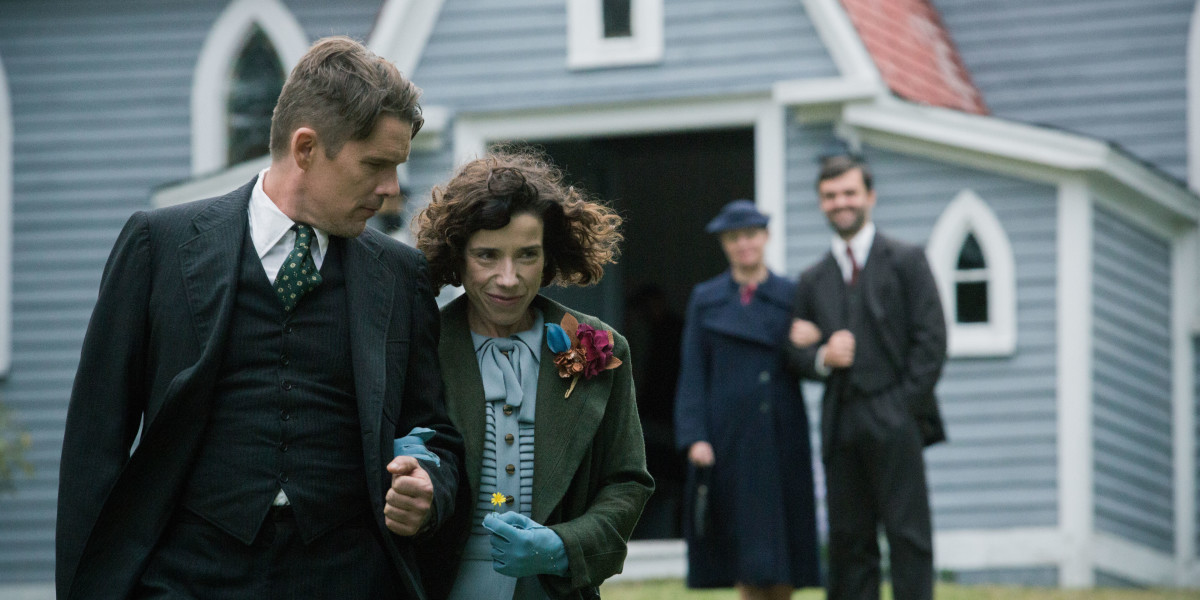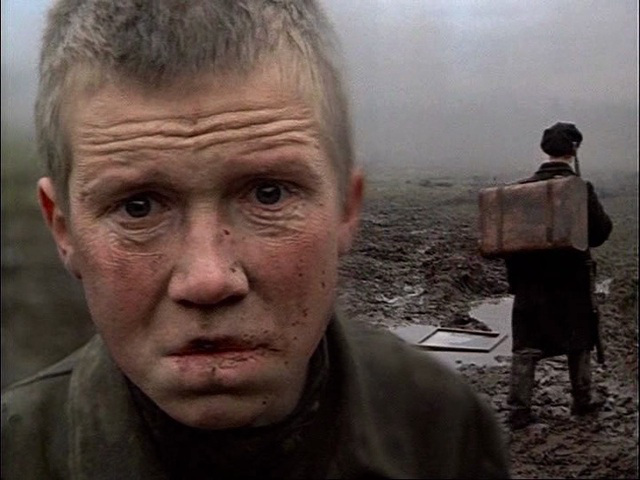“Inspiration is for amateurs – the rest of us just show up and get to
work.”
~~Chuck Close
“Oh bless the continuous stutter
Of the word being made into flesh.”
~~Leonard Cohen, “The
Window”
“Just when I thought there wasn’t room enough
for another thought in my head, I had this great idea –
call it a philosophy of life, if you will. Briefly,
it involved living the way philosophers live,
according to a set of principles. OK, but which ones?”
~~John Ashbery, “My Philosophy of Life”
Jim Jarmusch’s new film “Paterson” – about a poet named Paterson who drives
a bus for a living in Paterson, New Jersey – is concerned not simply with
poetry and the craft of prosody, but with the very nature of language itself.
Not only do other poets inhabit “Paterson” – a rap artist who composes in a
laundromat, a 10-year-old girl, a Japanese poet on a pilgrimage to Paterson,
home of William Carlos Williams – but the film is teeming with myriad varieties
of linguistic rhythm and style: in street talk; in conversations on the bus
(guy talk, kid talk, would-be anarchist talk, old lady talk); in conversations
in the neighborhood watering hole (bar stories, lovers’ quarrels, wifely scolds)
– each is a kind of quotidian poetry in itself.
“Paterson” – the film, the character, the town – is an unveiled
reference to William Carlos Williams’s epic poem “Paterson,” also about
Paterson, New Jersey, the town in which Williams lived and practiced medicine. In
the tradition of Emily Dickinson and Walt Whitman, Gertrude Stein and Wallace
Stevens, Williams sought to reject European poetic diction for a distinctly
American idiom drawn from the inflections of everyday speech and conveyed
through free verse cadences. At the height of his critical acclaim, Williams
published the collection “Spring and All” in 1922, the year that T. S. Eliot’s
“The Waste Land” appeared, eclipsing Williams’s achievement. In his “Selected
Essays” Williams would write, “Critically, Eliot returned us to the classroom
just at the moment when I felt we were on a point to escape to matters much
closer to the essence of a new art form itself – rooted in the locality which
should give it fruit.”
For his epic poem “Paterson,” published in five volumes from 1946-1958,
in a departure from his lyric method as he approached his latter years,
Williams developed a collage-like documentary approach. In a press release for
the publication of Book IV, in 1951, Williams described as the central theme of
the poem “the resemblance between the mind of modern man and the city.” He
wanted the poem to “speak for us in a language we can understand.”
Jarmusch, too, uses every tool in his writer/director arsenal to draw
us in to a language we can understand. On the popular low end, Jarmusch
delights in sight gags, hyperbole and understatement, taboo, slapstick,
mistaken identity. On the literary high end, he pulls out all the stops: aphorisms,
doppelgängers, archetypes, negative capability, paradox. His favorite tropes
are synecdoche in which a part of something refers to its whole or vice versa
and metonymy in which a thing or concept is not called by its own name but by a
name of something associated in meaning with that thing or concept. He always
employs episodic sequences, which give his stories the structure of classic
quest narratives and confers upon even the most commonplace characters, if not
mythic status, at the very least the standing of an Everyman – the ordinary
individual who faces extraordinary circumstances.
Jarmusch is always awash in allusion and doubling, and twins abound in
“Paterson.” Directed outward, Jarmusch films are veritable troves of references
to artists, poets, writers, musicians, film directors, scientists, et al.,
whether through incidental mention (Adam’s wall of fame in “Only Lovers Left
Alive” or Doc [Barry Shabaka Henley] the bartender’s in “Paterson”) or direct
advertence (like William Blake in “Dead Man”). They are just as packed
self-referentially; the oeuvre – in which actors, for example, share names with
characters who reference actual people and previous Jarmusch characters –
alludes to itself in a mise-en-abyme on
many levels. In his first film, “Permanent Vacation,” the main character is
Chris Parker – played by Chris Parker – whose artistic doppelgänger is the jazz
musician Charlie Parker. Adam Driver’s incarnation of Paterson is beautifully
subtle, expressive, and deeply felt, but it is no accident that the actor cast
for the role is named Adam Driver: Adam and Eve are the titular vampires of
“Only Lovers Left Alive” in Jarmusch’s last film, and Paterson is a driver of a
bus.
“Paterson” takes place over the course of a week, each sequence structured
by the arc of a day and the rhythms of the hours. We meet Paterson on Monday.
He wakes each morning midway between 6:00 and 6:30, reaches for his wrist
watch, checks the time, puts it on and kisses his lover (Golshifteh Farahani)
before getting out of bed. Her name is Laura, like Petrarch’s muse, and the
sweethearts share a secret microcosm of their own special making.
Paterson eats Cheerios from a small glass bowl and thinks of words,
leaves the house with his lunch pail, walks through the neighborhood – putting
words together in his mind – headed to the old factory district where the bus
garage sits, steals a few moments to write in his notebook, checks out with the
bus manager Donny (Rizwan Manji), then starts his engine and drives out into
the macrocosm that is Paterson. Each day Paterson returns to the little
world he makes with Laura and his little basement
desk arrayed with a library of poets – mostly the New York School, but “Infinite
Jest” is there, too.
Laura is something of a naif and most comfortable in black and white,
figuratively and literally. She is an extrovert who rarely goes out. He is an
introvert who is very much of the world. She dreams, he is: a fundamental,
existential difference. The couple seem to adore one another, and he writes
achingly beautiful poetry about her, but art is one thing and the daily sharing
of a life with another flawed individual is something else altogether. (One of
those love poems ends: “How embarrassing.”) Laura is mercurial, dreaming of creating
cupcakes one day, imagining herself a famous country western star the next. Driver’s
range of expression allows us to see Paterson’s genuine love for Laura, but it also
betrays his frustration, sometimes even hurt, when her self-involvement makes
her insensitive.
Place typically functions as a character in a Jarmusch film, and the
world of Paterson is a very Jarmusch-esque place. Originally inhabited by the
Acquackanonk tribe of the Lenape Nation, the area was first claimed by the
Dutch to become the New Netherlands, then by the British to become the Province
of New Jersey. Located on the power source of the 77-foot-high Great Falls of
the Passaic River, Paterson became the first planned industrial city in the
United States in 1791, making it a destination for immigrant laborers,
particularly Italian weavers drawn to the textile industry, especially silk
production. Indeed, by the early 19th century, Paterson was known as
“Silk City.” By the 20th century, the harsh conditions in the
factories fomented a labor revolt, and in 1913, labor leaders organized a
six-month-long silk industry strike, ostensibly for an eight-hour day and
minimum age restrictions. Concerns regarding working conditions, however, were
secondary to the overarching fears that echo the anxiety of today’s blue collar
worker. In 1911, in nearby Clifton, New Jersey, mill owners had installed a
multiple-loom system that required fewer workers. The Paterson strike,
predominantly fueled by fear of job loss, failed because adaptation to the new
technology was necessary to make Paterson’s mills competitive. Resistance to
the multiple-loom system would have put the Paterson mills out of business
altogether.
More than any other American director, Jim Jarmusch understands America
as a melting pot reflected in his casts and characters. Today, Paterson is home
to some of the largest immigrant communities in the United States: Bangladeshi,
Turkish, Arab, Palestinian, Albanian, Dominican, Puerto Rican, Peruvian. It is home
to the second-largest population by percentage of Muslims in the United States,
estimated at 25,000-30,000. As a haven for aliens and outsiders, the very
setting of the film speaks volumes to the Jarmusch project, which inevitably
incorporates characters – played by actors – who are themselves outsiders: here Laura as an immigrant and Paterson as a poet, certainly an outsider avocation
in 21st century America. Indeed, the film is punctuated with the
question, “Are you a poet?” to which Paterson always answers not simply, “No,”
but, “No, I’m just a bus driver.” Yet Jarmusch is telling us, as he has in more
than a dozen films before, it is true and honorable and good to be a poet.
The poems in “Paterson” were written by Ron Padgett (with the exception
of the 10-year-old girl’s poem “Water Falls,” which Jarmusch wrote). Padgett is
among a group of poets considered the second generation of New York School
poets, the original school of which grew out of the influence of William Carlos
Williams’s direct conversational style and urbane wit. The New York School of
poetry paralleled the New York School of abstract expressionist painting and
the poets were friends of the painters, among them Willem de Kooning, Jackson
Pollock, Larry Rivers, Jasper Johns. Surrealism and the modernist interest in
stream of consciousness (Williams began work on “Paterson” after reading James
Joyce’s “Ulysses”) shaped their technique, as well. Along with Williams,
Barbara Guest, James Schuyler, Frank O’Hara, John Ashbery and the poet under
whom the second generation studied, Kenneth Koch, made up the New York School.
In addition to Padgett, the second generation includes Ted Barrigan, Joseph Ceravolo,
Frank Lima, Joe Brainard, Lewis Warsh, Anne Waldman, Bernadette Mayer, Alice
Notley, and Tom Savage. Perhaps Jarmusch’s film will lead some of us back to
rediscover the power of these poets’ works.
Poetry flows through Paterson – the film, the character, the town –
like the Great Falls to which our poet repairs. The craft – the over and over
of it day in, day out – is first and foremost the craft of reflection, and
Frederick Elmes’s expressive cinematography caresses the reflection in which
Paterson the poet is absorbed. The glass of the bus windshield reflects the
streets of Paterson; the water of the Great Falls reflects the natural world
around it; even the puddles in the girl’s poem “Water Falls” reflect.
 |
|
Jarmusch has a fascination with the flâneur, and Paterson’s
poetry grows out of his being in the world of society that he watches and eavesdrops
on in a state of heightened awareness. He traverses the man-made world of urban
architecture (the art we live in, walk in, travel through) as well as the world
of nature each day, every day. SQÜRL’s music (Carter Logan and Jim Jarmusch)
gives Paterson’s perambulations and his daily exit from the depot an almost holy
quality. For the poet, that holiness is forged through the crucible of
language. Jarmusch understands that we each manipulate language to make
narrative sense of life as lived. We do not merely state what happened. We tell
a story, which is to say, we do nothing less than create myth – a story that is
bigger than life in its episodic configuration. When the bus breaks down, a boy
asks “Did it run out of gas?” “No. Just an electrical problem.” “Sabotage
probably,” the boy ominously suggests. With each retelling of this story, one
after another of Paterson’s listeners speculates, it could have “turned into a
fireball!” No mere bus breakdown this. No, it could have been a conflagration. “Story,
finally,” the celebrated children’s author Lloyd Alexander observed, “is
humanity’s autobiography.” Paradoxically, when tragedy does befall our poet, he
meets it with silence, until a Mysterious Stranger (Masatoshi Nagase) directs
him back toward reflection and emotion recollected in tranquility.
“Paterson”
In select theaters
Netflix: April 2017
Redbox: April 2017
Writer/Director: Jim Jarmusch
Stars: Adam Driver, Golshifteh Farahani
Rating: R
Running Time: 1 h 58m















